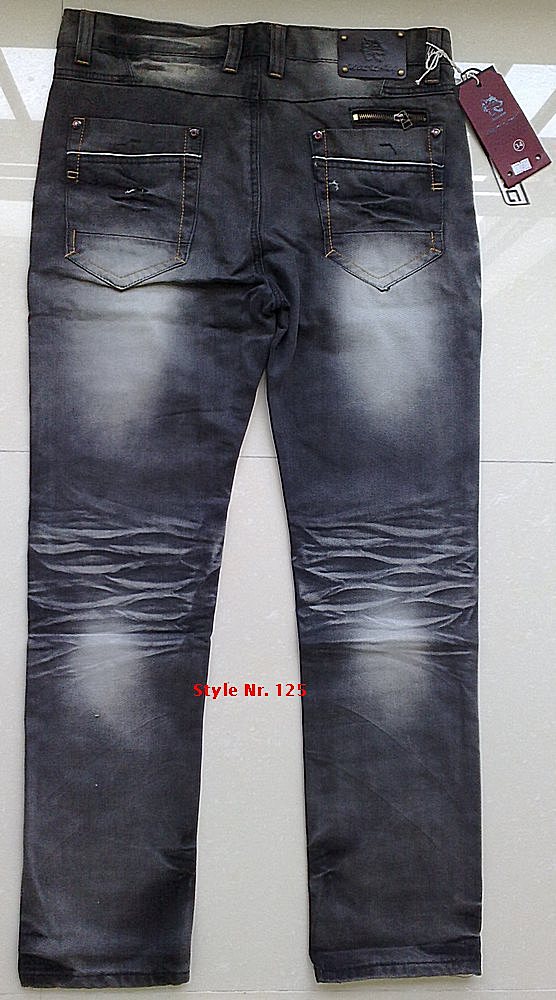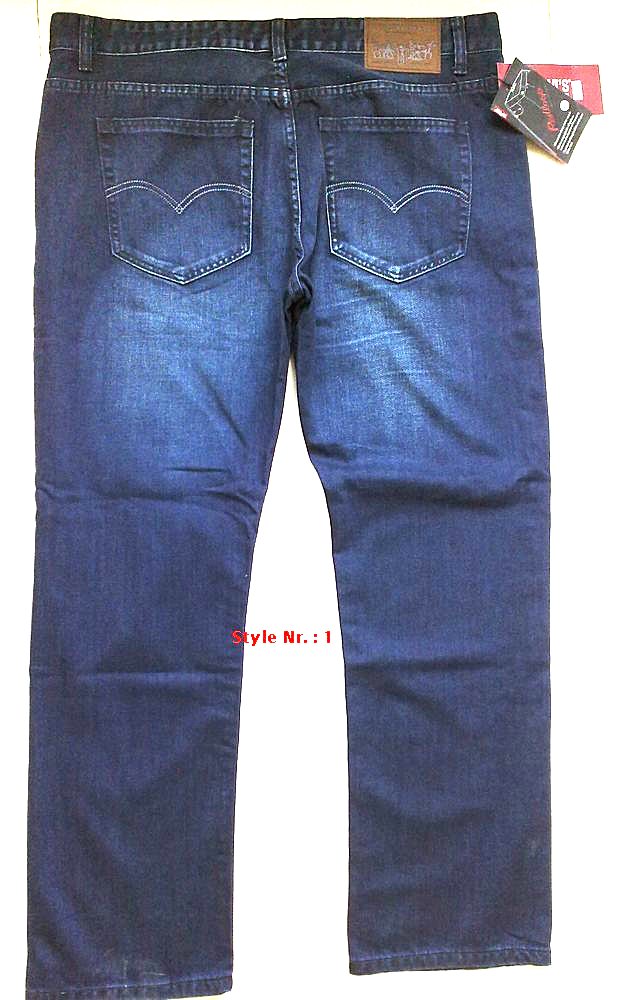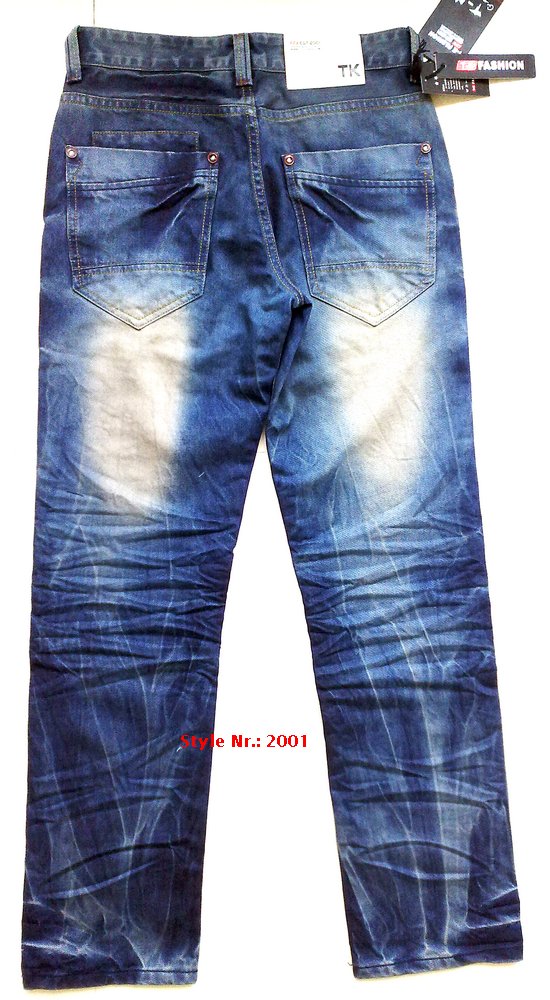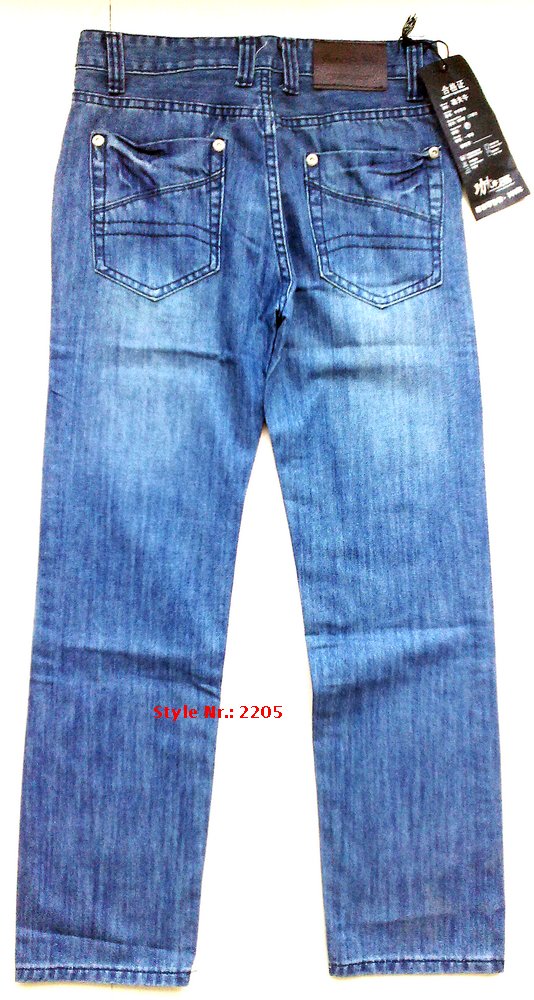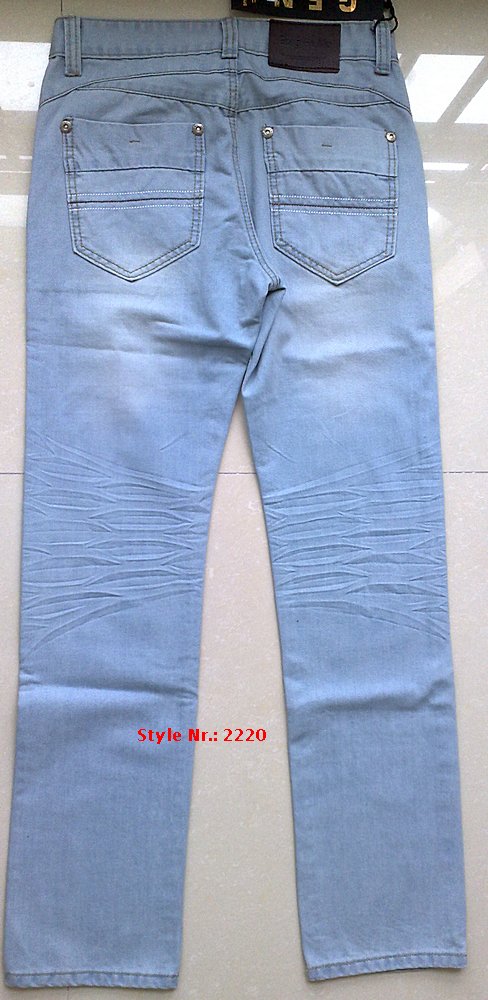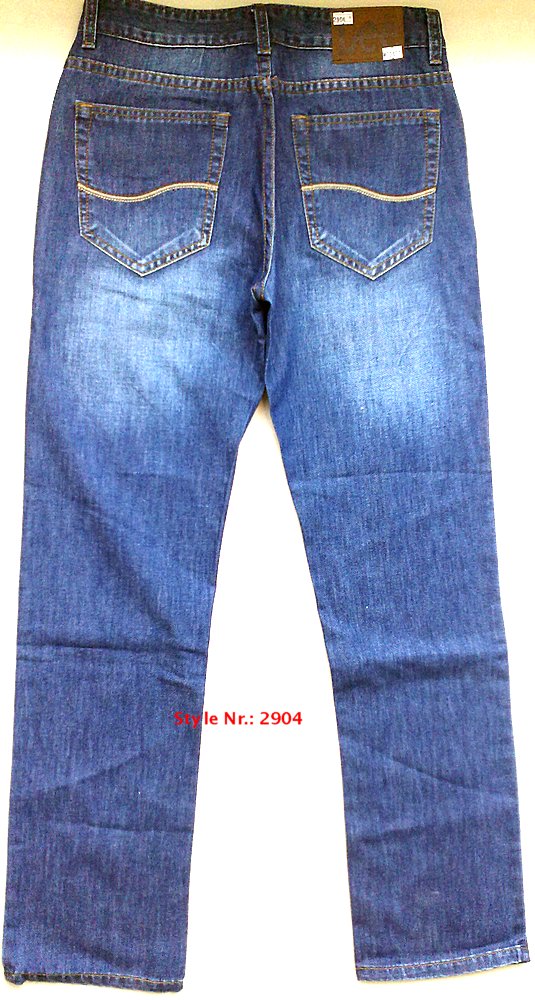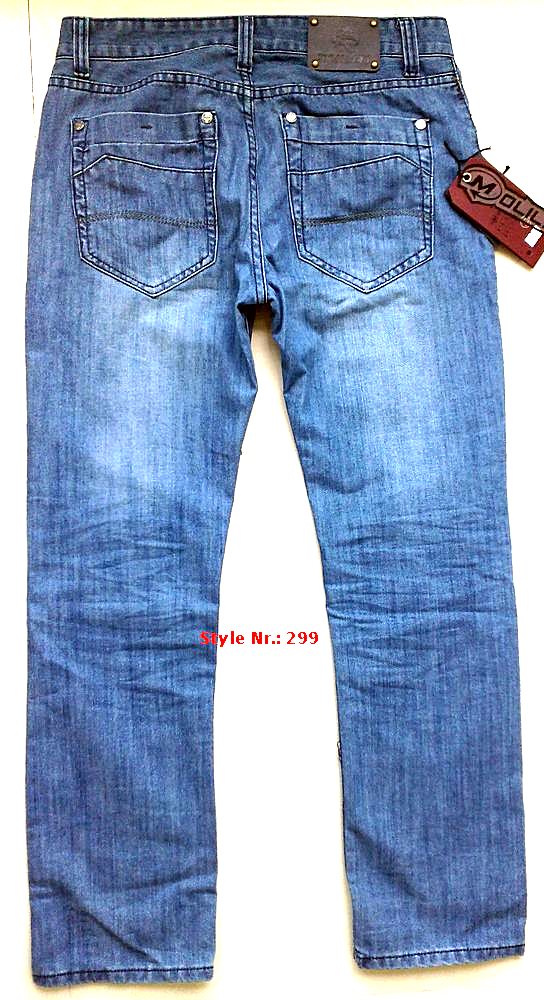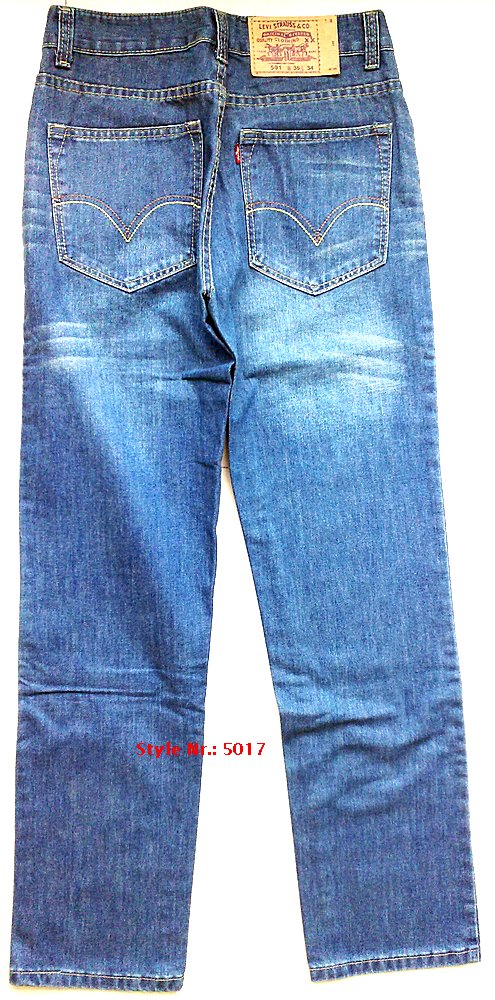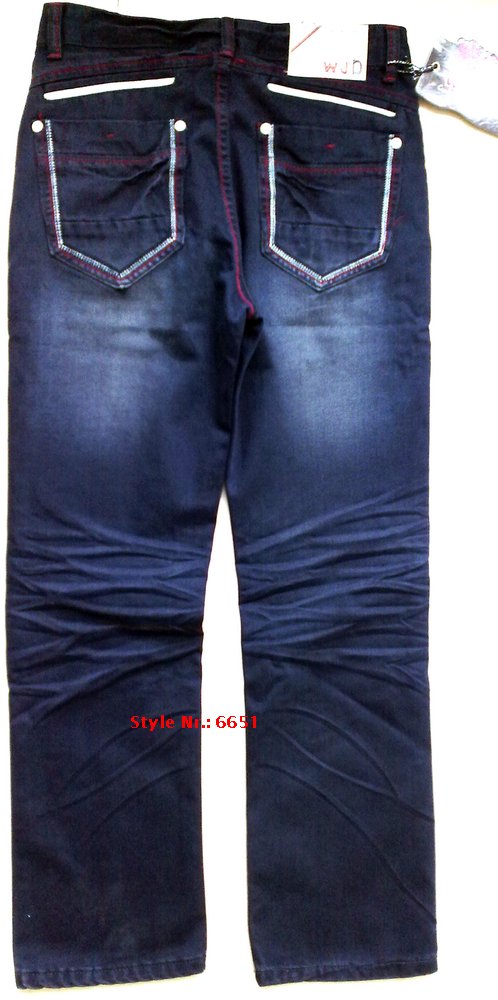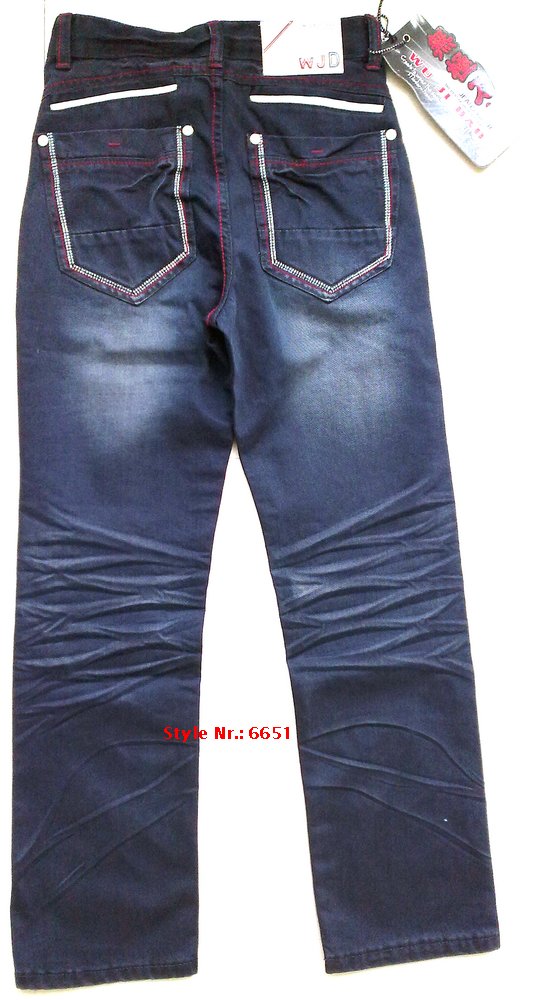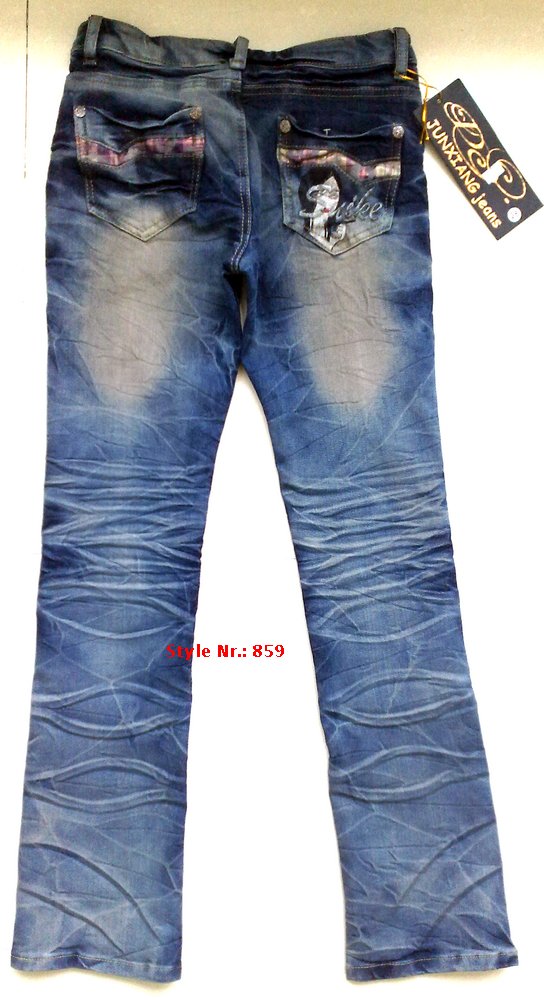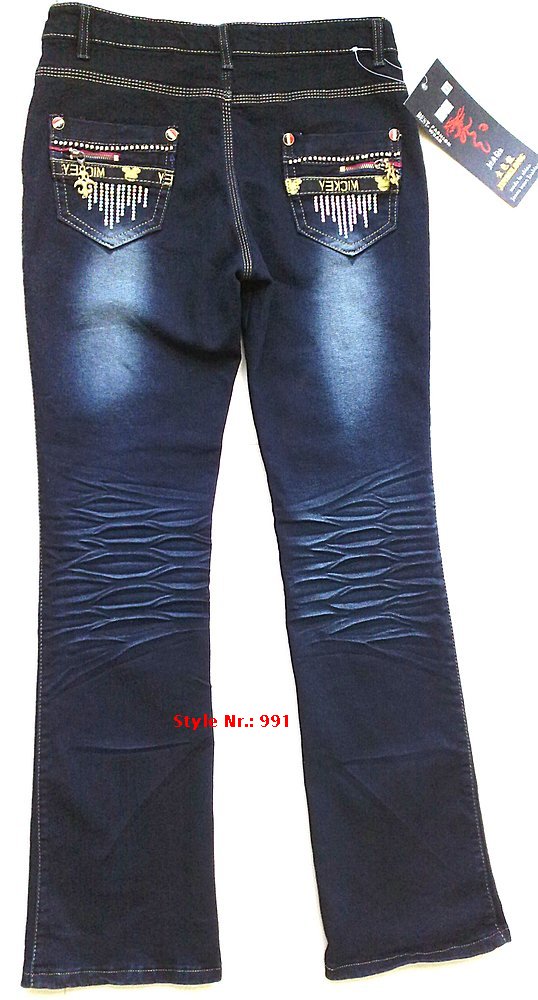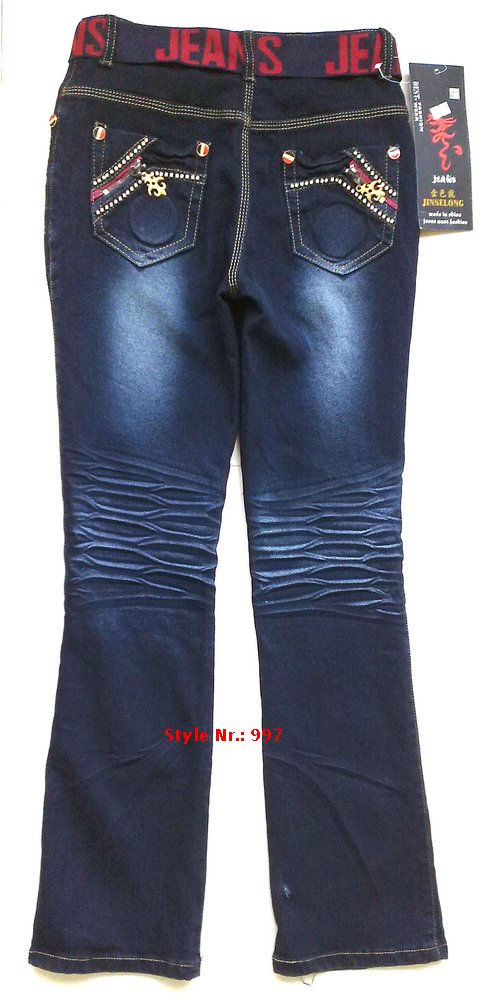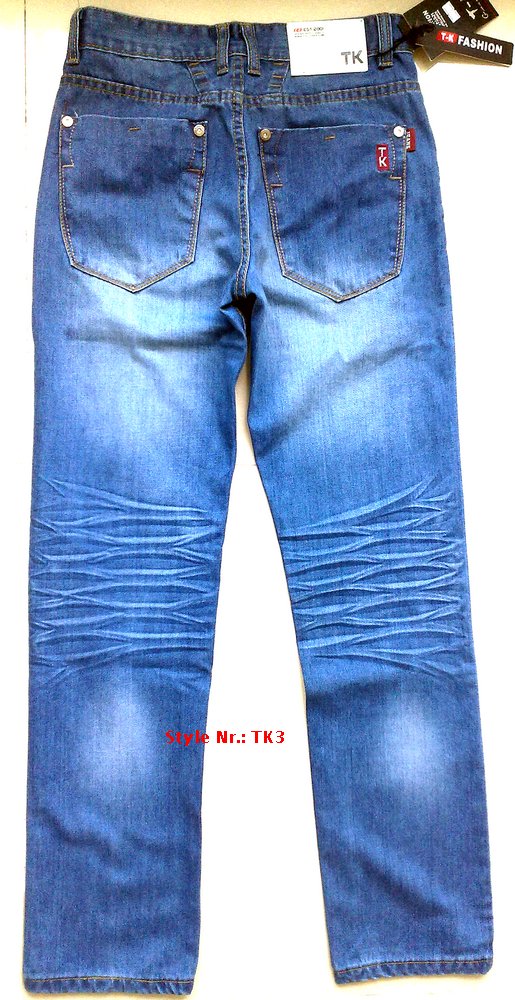Jeans
manufacturing
To produce a pair of a pair of traditional jeans, following
techniques are required. The sewing process alone takes between 12 and
15 different types of sewing machines, special equipment for attaching
the trims will also be necessary. To save time and materials it's best
to have the machinery for the different operations already set up.
Some
machines
may require up to 4 or 5 thread spools to create one stitch. Setup and
advance planning can get pretty complex especially if the designer
wants to have several contrasting color threads for the stitching
throughout the blue jean garment. Each operation would be set up
separately because there are different color threads required for
different parts of a blue jean garment. There are also a variety of
stitches required for different parts of the garment for functional
reasons.
For
example
the hem might use a chain stitch and a seat seam may need a felled
stitch for reinforcement since that part of the denim jean garment has
greater stress from the wearer. One area may need a single needle
stitch where another area might use a double needle stitch. I have
learned from the mass production processes that it becomes more cost
efficient when an assembly line scenario is utilized and the best way
to keep costs low for the consumer is to make mass quantities.
Jeans denim,
jeans, designer jeans, celebrity clothing, red carpet fashion, Export
Jeans
The stitch complexity used in creating a pair of jeans is far greater
than that of sewing together a custom suit!
As mentioned above a designer may choose to use a variety of thread
colors throughout the denim jean so the more complex the thread color
combinations the more expensive the construction will be. A greater
inventory of threads needs to be kept and a higher skill level employee
would be required to sort out the thread layout.
Cost considerations include stitches per inch. The higher the stitch
count, the more expensive it will be to construct a garment since there
is greater thread consumption. It may also be interesting to note that
not only is it important to be watchful of the stitch count on one
machine type but to have all machines used in constructing that garment
to have a similar stitch length so their is a consistency throughout
the garment.
|

